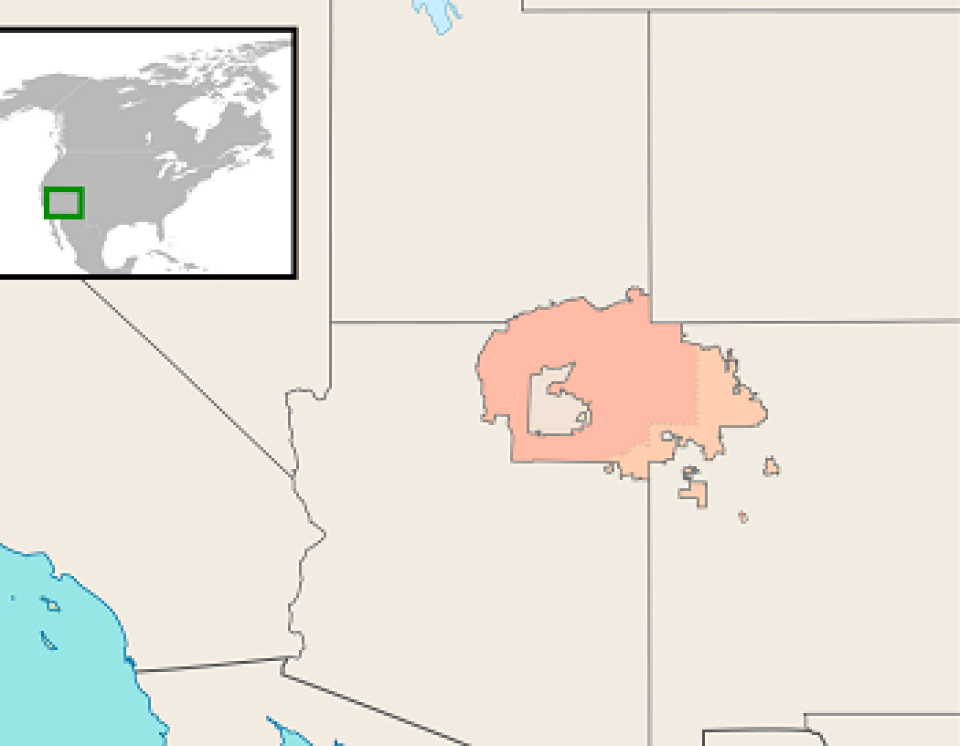
Fast, affordable Internet access for all.

The Navajo Tribal Utility Authority (NTUA) is slated to receive more than half a million dollars in Covid-relief funding from the state of Utah. The funding will help the NTUA expand fiber and wireless access to part of the 27,425 square mile Navajo Nation, improving access at Navajo anchor institutions and some of the nation’s 173,000 residents.
The NTUA was created in 1959 by Navajo leaders frustrated by the fact that regional utilities had failed to provide uniform electricity services to the Navajo people. Still, over 60 years later and not only is the failure to electrify marginalized communities still a problem, the organization is leveraging its experience in that fight to expand broadband access as well.
Project Timeline: 30 months
To help fix the problem, the Utah Broadband Center, run by the Governor’s Office of Economic Opportunity, recently doled out $420,732 in broadband grants to the NTUA. Combined with $140,244 in matching funds from the NTUA, the project will bring a combination of fiber and wireless to 473 households currently unserved in Montezuma Creek, Utah.

The grants were part of $10 million in Covid relief funding recently awarded by the Utah Broadband Center and made possible by the American Rescue Plan Act.
“From the time they sign the contract with the state, they have 30 months to complete the project,” Rebecca Dilg, Director of the Utah Broadband Center, told ILSR. “We are still working out the details of the contracts with all grant recipients.”
This past August, the Open Technology Institute (OTI) (a program of New America) released its 2020 Cost of Connectivity Report, which showed that a combination of regulatory and oversight choices combined with market forces results in Internet access that for most Americans is slower, less reliable, and more expensive than elsewhere in the world.
In October, the OTI followed up that report with one focused on the Navajo Nation. It argues that “altogether, the federal government’s failure to connect people on tribal lands deprives entire tribes of opportunities for employment, healthcare, education, and economic growth in both the short and long-term.”
The Navajo Nation is divided into 109 political subdivisions (called chapters) by geography across Arizona, New Mexico, and Utah. The OTI report finds that just four of those chapters have access speeds which meet the FCC’s standard for basic broadband (25/3Mbps (Megabits per second)), and that many in the community remain stuck on the wrong side of the digital divide.
More Findings
Claire Park, author of the study, pulled data from the Navajo Nation Woven Integrated Data Project and combined it with FCC data and state broadband maps from March to July 2020, cross checking a sample of addresses with existing residential Internet Service Providers (ISPs) in those areas. It uses a total of 450 offered plans in its data set.
The report succinctly argues that broadband remains just one among the litany of struggles that those living on tribal lands face:
The ongoing COVID-19 pandemic exposes the deeply unjust policies behind stark inequities in certain communities. In the case of tribal nations, the federal government’s lack of support during the pandemic is another chapter in a brutal history of injustice that leaves tribes particularly vulnerable to this disease. Generations of federal policies undermining Indigenous wealth, power, and sovereignty have left many Native people without access to basic infrastructure, including food, running water, safe and adequate housing, telecommunications service, and healthcare.

This week on the podcast Christopher talks with Catherine Nicolaou, External Affairs and Marketing Manager for Sacred Wind Communications, a rural local exchange carrier in NW New Mexico that has been focused on serving the Navajo Nation communities there. She shares the history of Sacred Wind, from buying copper infrastructure from Century Link 13 years ago in a region where just 26% of the households had Internet access to its 400 miles of fiber infrastructure today, allowing it to bring broadband to more than 92% of those living there.
Catherine tells Christopher how the company has had to rely on the full array of technologies to bring broadband access to families in a large area with particular geographic and topographic challenges, from Citizens Broadband Radio Service (CBRS) to TV White Space (TVWS) to infrared to fixed wireless and, of course, Fiber-to-the-Home (FTTH). They talk about what it means to Sacred Wind’s subscribers that the provider has never raised prices, and the work it’s been doing during the pandemic to make sure everyone gets and stays connected.
Don’t forget to check out our new show, Connect This!, where Chris brings together a collection broadband veterans and industry experts live on Youtube to talk about recent events and dig into the policy news of the day.
This show is 30 minutes long and can be played on this page or via Apple Podcasts or the tool of your choice using this feed.
Transcript below.
We want your feedback and suggestions for the show-please e-mail us or leave a comment below.
Listen to other episodes here or view all episodes in our index. See other podcasts from the Institute for Local Self-Reliance here.
Thanks to Arne Huseby for the music. The song is Warm Duck Shuffle and is licensed under a Creative Commons Attribution (3.0) license.